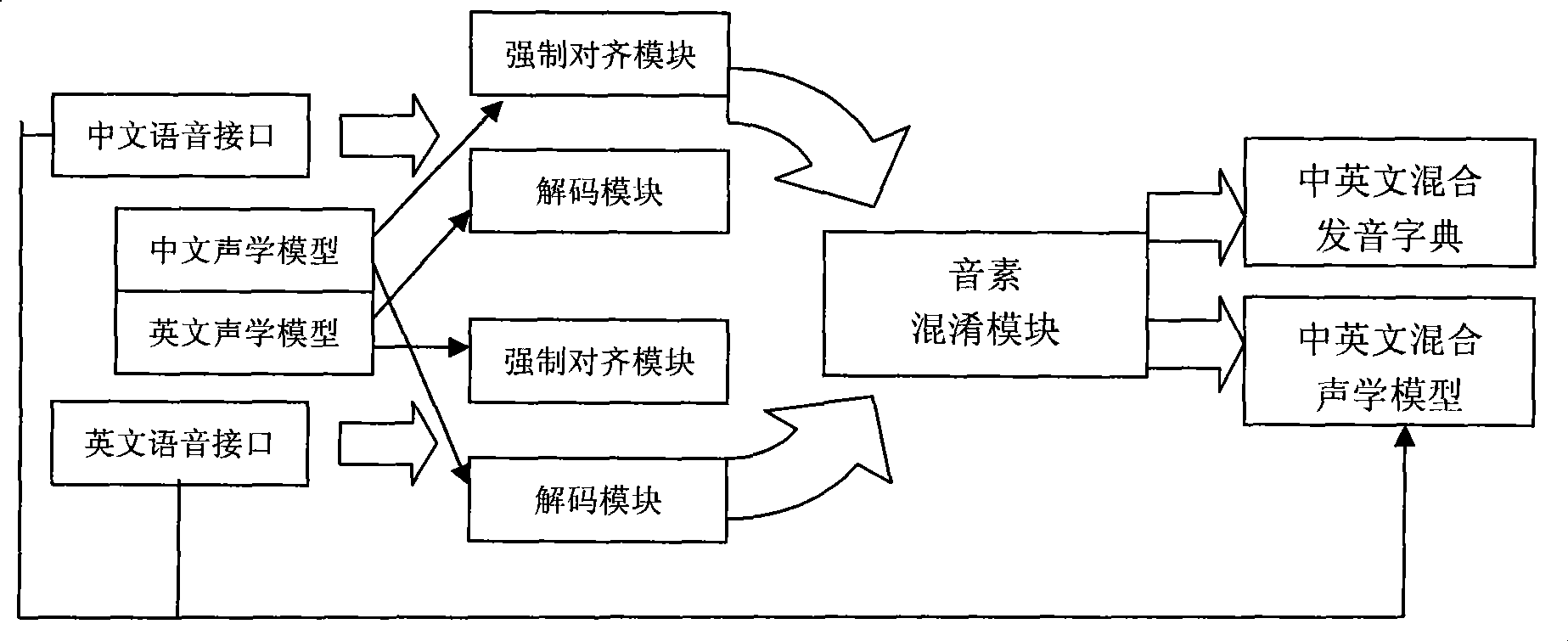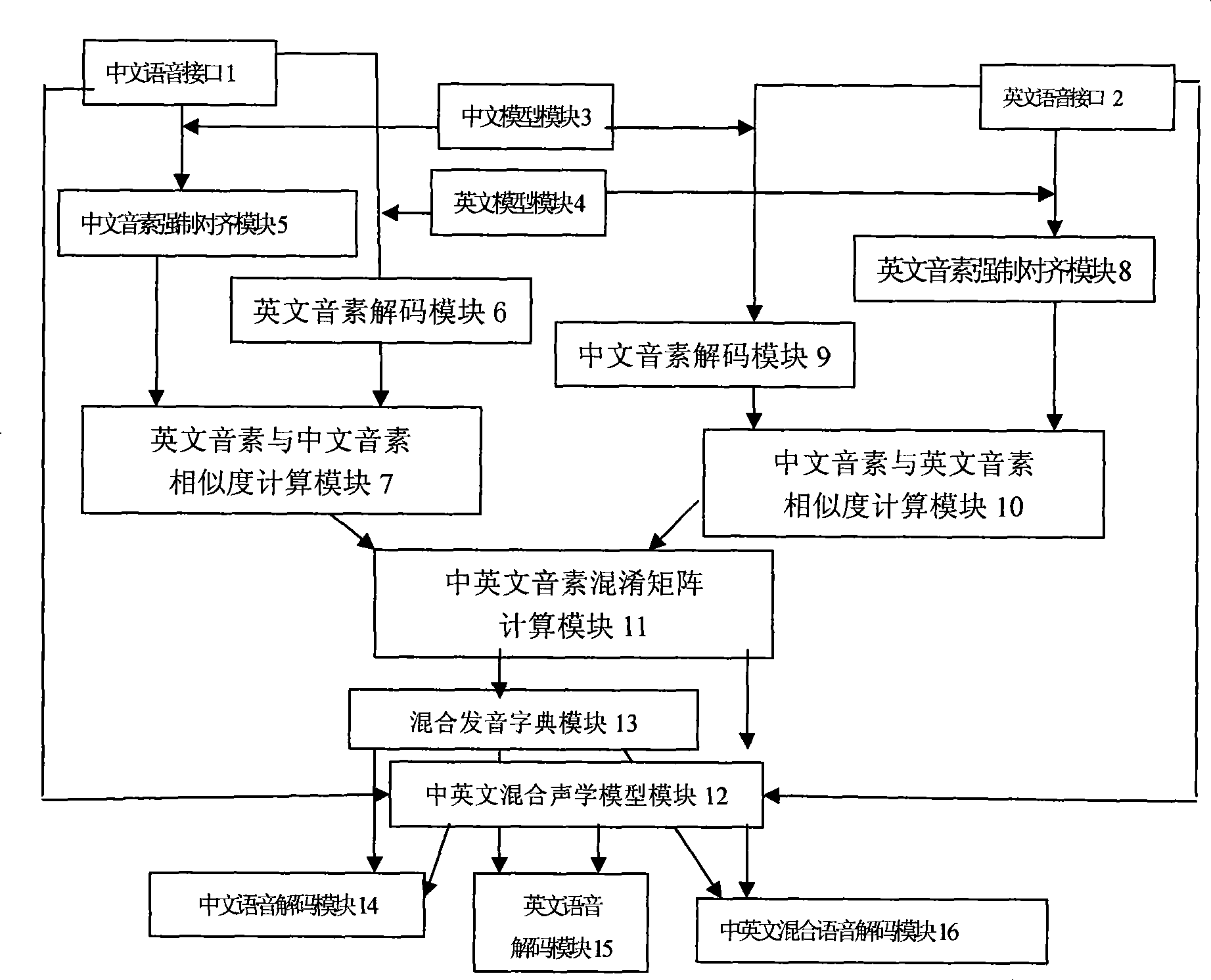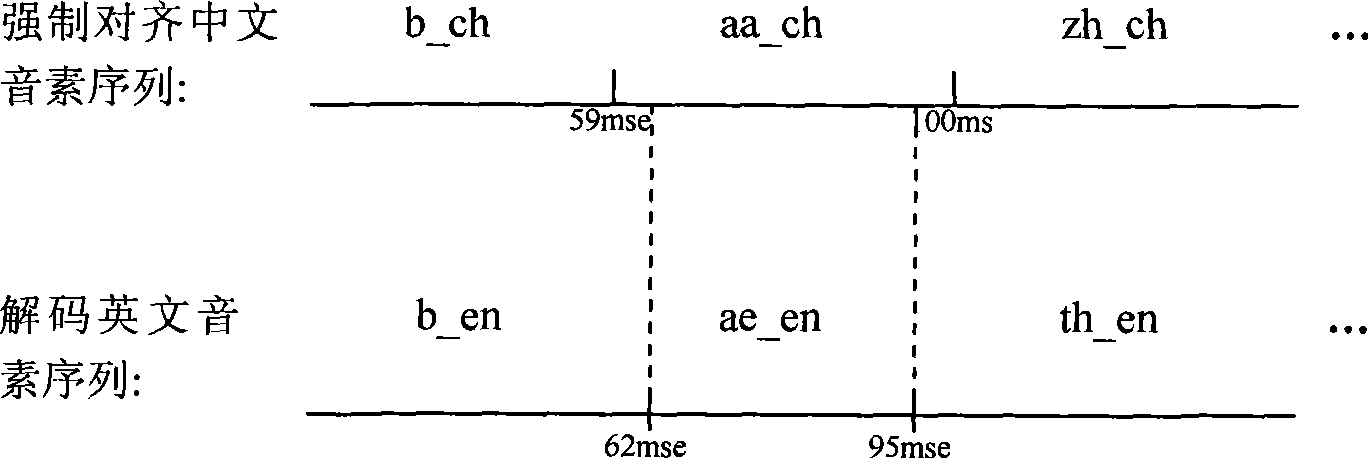Chinese-English bilingual speech recognition method based on phoneme confusion
A speech recognition, Chinese and English technology, applied in speech recognition, speech analysis, instruments, etc., can solve unreliable problems and achieve the effect of model scale reduction
- Summary
- Abstract
- Description
- Claims
- Application Information
AI Technical Summary
Problems solved by technology
Method used
Image
Examples
Embodiment Construction
[0041] figure 1 It is the basic principle block diagram of the Chinese-English bilingual recognition system based on the two-pass phoneme clustering algorithm TCM. It describes the core components of the phoneme clustering algorithm. It is mainly composed of several parts: Chinese / English voice, Chinese / English model, mandatory Alignment, decoding, phoneme confusion matrix generation, and Chinese-English mixed model training. figure 2 It is a flow chart of the specific implementation of the Chinese-English bilingual recognition system based on the two-pass phoneme clustering algorithm TCM.
[0042] Combine below figure 1 as well as figure 2 The specific embodiment of the present invention is described in further detail:
[0043] The core technology of the Chinese-English bilingual recognition system based on the two-pass phoneme clustering algorithm TCM involved in the present invention lies in the two-pass phoneme clustering algorithm TCM (modules 1 to 11). TCM is a n...
PUM
 Login to View More
Login to View More Abstract
Description
Claims
Application Information
 Login to View More
Login to View More - R&D
- Intellectual Property
- Life Sciences
- Materials
- Tech Scout
- Unparalleled Data Quality
- Higher Quality Content
- 60% Fewer Hallucinations
Browse by: Latest US Patents, China's latest patents, Technical Efficacy Thesaurus, Application Domain, Technology Topic, Popular Technical Reports.
© 2025 PatSnap. All rights reserved.Legal|Privacy policy|Modern Slavery Act Transparency Statement|Sitemap|About US| Contact US: help@patsnap.com



